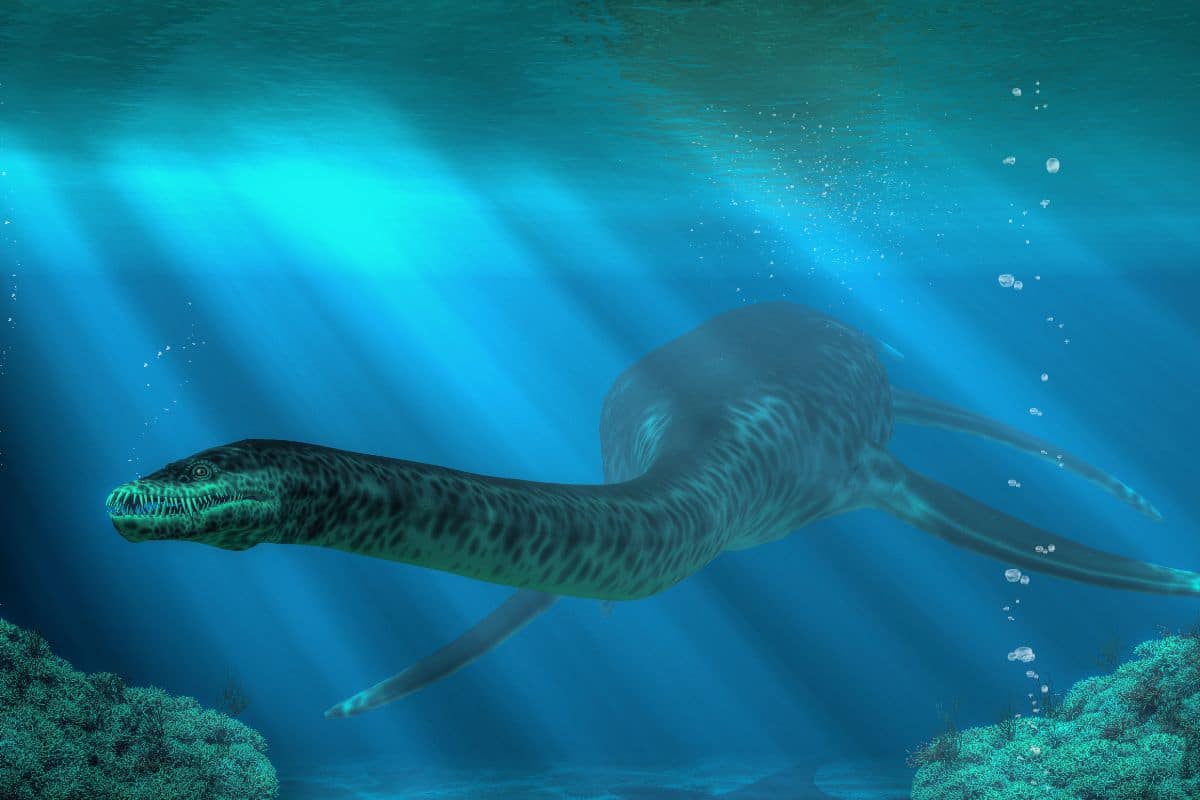
Scientists have made a groundbreaking discovery with the finding of an 183-million-year-old plesiosaur fossil in Germany, offering invaluable insights into the outer anatomy of this well-known marine reptile from the Jurassic period. Researchers based at Lund University in Sweden uncovered fossilized soft tissue, highlighting that plesiosaurs exhibited a unique combination of smooth and scaly skin, a trait previously undocumented in these ancient creatures.
Exceptional Preservation of Soft Tissue
The occurrence of soft tissue in fossils is remarkably uncommon, especially in marine reptiles. While skeletal remains can endure for millions of years, skin and internal organs typically decompose long before they can become fossilized.
This newly discovered 183-million-year-old plesiosaur, found remarkably intact near Holzmaden, Germany, preserved sections of its skin and flippers, allowing researchers to study anatomical features that were previously invisible.
“I was astounded to discover skin cells that had survived for 183 million years,” remarked Miguel Marx, a Ph.D. candidate in geology at Lund University and the lead author of the research. “It felt almost like examining contemporary skin.”
A Surprising Revelation of Scales
For many years, scientists widely believed that plesiosaurs had smooth, scaleless skin akin to modern marine species such as whales. However, this recent study has uncovered a combination of smooth and scaly skin textures, suggesting that these reptiles had a more intricate body covering than previously understood.
“This variety of scales and scaly skin is unprecedented in plesiosaur research,” stated Johan Lindgren, associate professor of geology at Lund University. “Thanks to this incredible find, we now possess a far richer understanding of what these creatures might have looked like when they were alive.”
The Apex Predators of the Sea
Plesiosaurs ranked among the most formidable marine hunters of the Jurassic period. With their elongated necks, robust flippers, and streamlined physiques, these reptiles could reach lengths of up to 40 feet and flourished in the ancient oceans. They maneuvered through water using their four paddle-like flippers, reminiscent of modern sea turtles.
Despite being the subject of study for over 200 years, much about their external anatomy remained elusive—until now. This revelation significantly alters scientists’ perceptions of how plesiosaurs adapted to their marine habitats.
“The discovery of scales was unexpected and transforms our understanding of how these creatures adapted to their oceanic environments,” Marx noted.


Implications for Evolutionary Studies
This fossil not only sheds light on new anatomical features but also contributes significantly to our understanding of evolutionary processes. The surprising presence of both smooth and scaly skin suggests that plesiosaurs evolved specialized skin types to improve their hunting effectiveness and adaptability in various underwater environments.
“We employed a diverse array of methods to identify smooth skin in the tail area, along with scales along the back edge of the flippers,” Marx elaborated. “This provided us with unparalleled insights into the characteristics and biology of these long-extinct reptiles.”
If not for the preserved soft tissue, scientists might have incorrectly assumed that plesiosaurs were entirely scaleless, akin to numerous other marine reptiles of their time.









